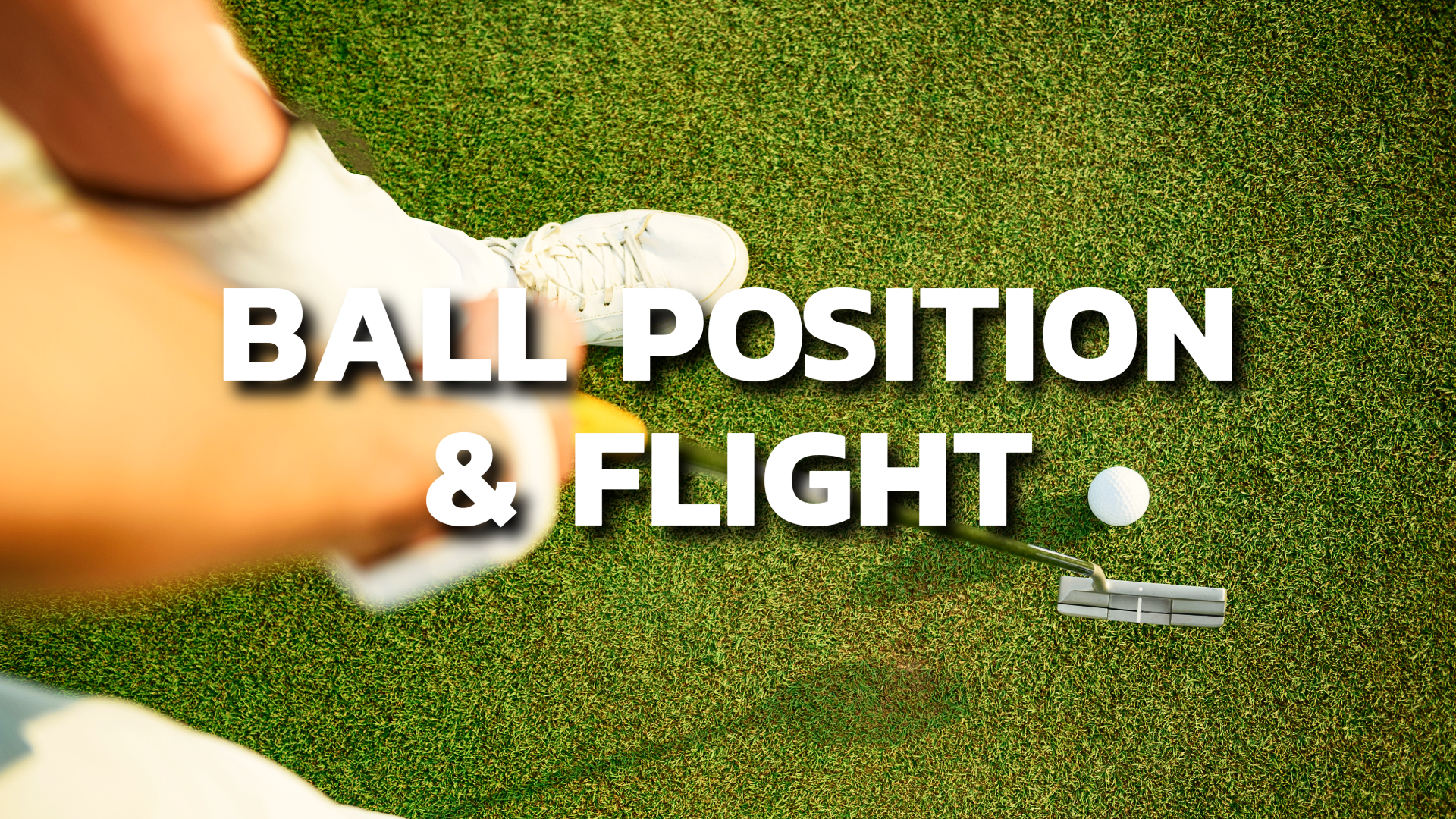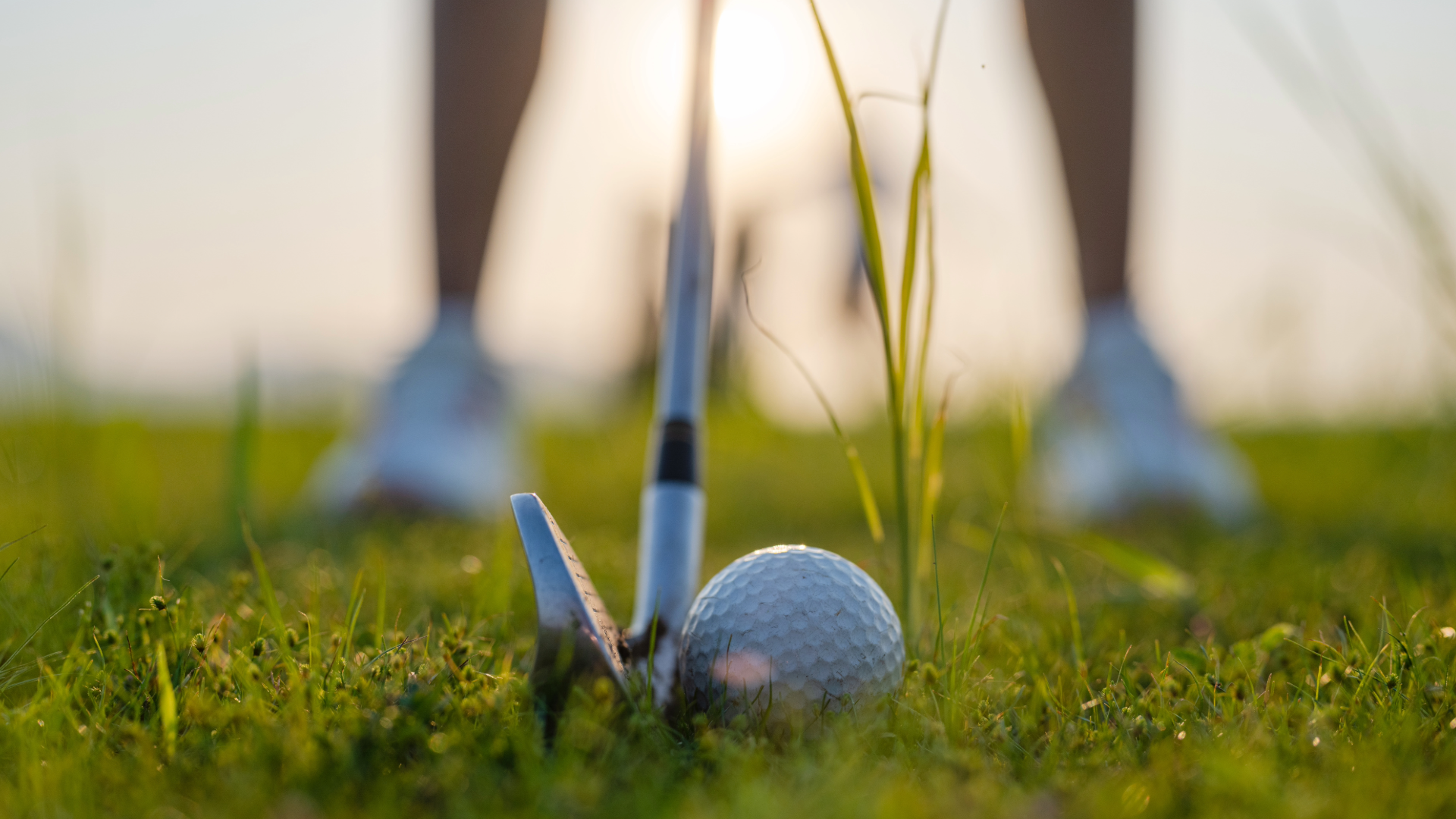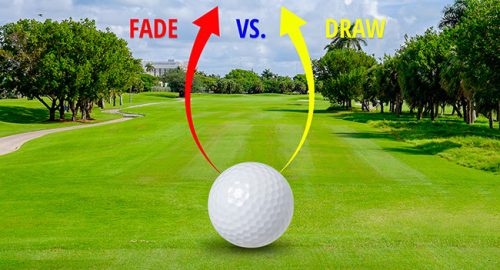
Did you know that something as simple as your golf ball position can have a dramatic impact on your ball flight? Whether you’re struggling with a slice, hitting it too low, or looking for more consistency, adjusting where the ball is in your stance can make a world of difference.
But you need to understand the ball position with each club in the bag. Otherwise, you might lose distance and accuracy.
In this post, we’ll break down exactly how ball position affects your shots – from driver to wedges – and show you how small changes can help you control trajectory and ball flight. You can use this guide to fine-tune your golf ball setup and take your game to the next level.
Golf Club Technology: How it Affects Ball Flight
Before helping you understand ball position with each club, we should mention how golf equipment has changed over time.
In the past, clubs were much smaller, which allowed golfers to curve their golf shots much easier. However, they were also far less forgiving, and this is why golf club manufacturers started making larger, easier to hit clubs. Larger clubs are harder to curve as they’re meant to help everyday golfers hit them straighter, which is why the correct golf ball position at impact is so important.
This is why many professional golfers play blade irons while most amateurs play traditional game improvement irons – because they have the skill to wield the smaller clubs. Simply put, the larger the clubhead, the harder it is to curve it as you’re working against the technology.
This is why getting the right golf ball position is so important, because it can help give you that little extra help when planning the golf ball’s trajectory and curve.
Ball Position and Flight by Club
Now that we’re clear on how golf club technology impacts ball flight, let’s get into the breakdown of the right golf ball position for each club.
Driver
A driver is the one club you should never change the ball position with – it should always be “up” in your stance. Why?
Because you hit it off a tee and it’s designed to hit with an upward angle of attack. If you move the ball position to the middle or back of your stance, you’ll get steep and chop down on it.
Which will lead to one of the worst shots in golf: a pop-up. Not only does a pop-up go a fraction of the normal distance, you risk getting a skymark on the top of the club. This is nearly impossible to remove and is a nasty reminder of the shot every time you look down at address.
Play the driver off the front of your stance and never change it. To change the flight, adjust the driver if possible to a neutral or draw setting.
If you do want to consider changing ball position with this club, make sure it’s a mini driver. These newer clubs are more like a 2-wood with a shorter shaft and smaller clubhead. You can move the ball position slightly to hit a draw, but we still wouldn’t recommend moving it too much.
Fairway Woods
A driver is pretty easy in terms of ball position, but there’s a little more forgiveness with fairway woods. You want to keep them between the middle to middle-center of your stance.
Avoid placing the ball too far up in your stance, as you’ll likely hit up on the shot and cause a thin strike. If you’re hitting them off a tee, opt for front-center ball position.
If you want to try and hit a draw, move it slightly further back to the middle of your stance. Like your driver, these clubs are also adjustable, which can impact the ball flight as well.
The lower the loft (3 or 5-woods vs. 7 or 9-woods), the easier it is to curve the ball.
Irons and Hybrids
Irons allow you to change ball position more than any other club to directly impact distance and the ball flight. But it depends on the type of iron, as changing ball position too much can negatively affect your strike.
Let’s break it down based on different types of irons.
Long Irons (2, 3, and 4-iron) and Hybrids
You can do a lot with long irons…if you’re good enough to hit them consistently well. Which, unfortunately, isn’t the case for most golfers and the reason they don’t come with most iron sets.
The length and minimal loft of these clubs make them very unforgiving and hard to hit. Which is why it’s a better idea to use hybrids, like the AnyLie Hybrid, as a more reliable option.
However, if you do have the ball striking skills needed, you can alter ball position. These clubs should be hit from the front-center of your stance. If you want to play a fade or hit a higher shot, try to move it slightly up, but not to your front heel.
If you need a lower flight or want to hit a draw, move it toward the middle of your stance. Avoid going too far back with these longer clubs, as it’s easy to get steep and hit them fat.
Most hybrids replace long irons and are quite similar in terms of ball position. Don’t fall into the trap of placing them too far up in your stance like some golfers, as you’ll not get a descending strike.
Mid-Irons (5, 6, and 7-iron)
The mid-iron allows you to move the ball position the most, and directly impacts ball flight. These clubs are also a lot easier to hit than long irons, so you can hit a variety of shots depending on what the hole calls for.
For a standard shot, play them in the middle of your stance. If you want to hit a fade or slightly higher ball flight, move them up in your stance. This might take a few yards off the total distance, so plan accordingly.
If you need a lower ball flight or want to hit a draw, move them just back of center. This will help change your path to the right and get the clubface slightly closed at impact. From this position, you’ll typically hit it a few more yards than a normal middle stance.
Like long irons, avoid playing them too far back in your stance.
Short Irons (8 and 9-iron)
For short irons, you want to stick with the middle ball position for most shots. Since there isn’t as much loft as long or mid-irons, you won’t be able to curve the ball too much.
Wedges

How does changing ball position affect flight with wedges? Very similar to your irons, especially short irons.
Since wedges are nearly the same as an 8 or 9-iron, you want to play them in a similar stance. You should never hit a full swing wedge playing the ball too far forward, though. While you can get away with it for long irons, this is a recipe for disaster with wedges.
Instead, play them middle to back of your stance. From the middle you will hit them pretty straight but if you need to hit it higher, try to add more speed and a higher follow through.
By shifting the ball position further back in your stance, you move the path right, which makes it easier to hit a draw. However, wedges are very short and have tons of loft, which makes it harder to hit big fades or draws.
If you need to change ball flight because you’re in trouble, it’s best to go with an iron instead of a wedge. Less loft makes it easier to curve it around a tree or other obstacle.
Putter
Lastly, we can’t forget to mention the putter ball position as well. Just like woods, irons, and wedges, the wrong ball position can help or hurt your putting.
Similar to irons, you can experiment slightly with putting ball position. There isn’t one position like there is with a driver – you have some wiggle room.
In general, you want to have the putter in the front-center of your stance. This helps hit the putt solid and get it rolling smooth.
Various Putter Ball Position
- Front of stance: Too far up in your stance leads to hitting up on the putt, resulting in a low strike on the face. This will usually lead to leaving putts short and not giving them any chance of getting to the hole.
- Middle ball position: If you don’t have a ton of forward press and enough loft, this can work, but it’s dependent on your stroke. Slightly ahead of the center is ideal for most golfers.
- Back in stance: The one place you typically want to avoid is too far back and leads to a descending strike. Which will make the ball pop off the face and get airborne instead of rolling smoothly along the ground.
Test out different positions on the putting green and record your stroke to see how various ball positions impact the roll of the putt. It’s also a good idea to use a putting mirror so you get your eyes positioned correctly as well.
Practice Ball Position on the Driving Range
Now that you understand the basics, it’s time to test your skills.
On the driving range or in a golf simulator, hit from various spots in your stance to see how it changes flight. Don’t just take this advice to the course without first seeing how it feels in your game – every golfer has a unique swing.
Once you get comfortable with different ball positions in practice, then you can take it to the golf course. If your swing needs some help, don’t forget to check out SwingFix AI or 1:1 VIP coaching too.

